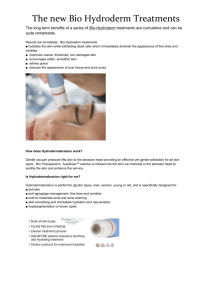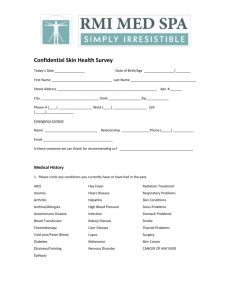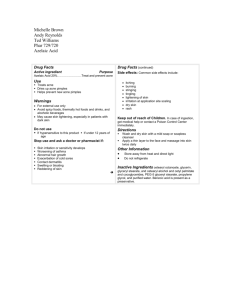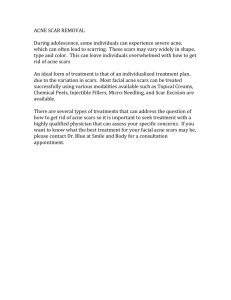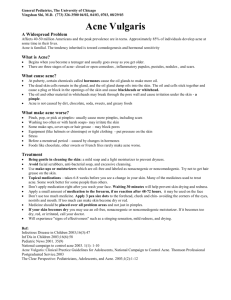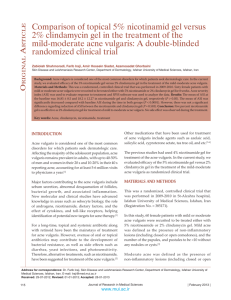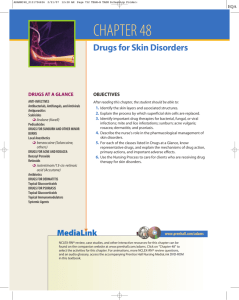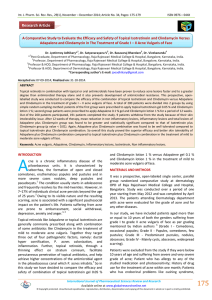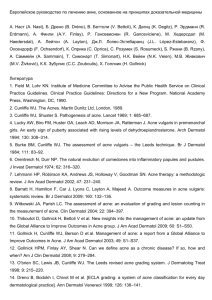osce_acne - OSCE-Aid
advertisement
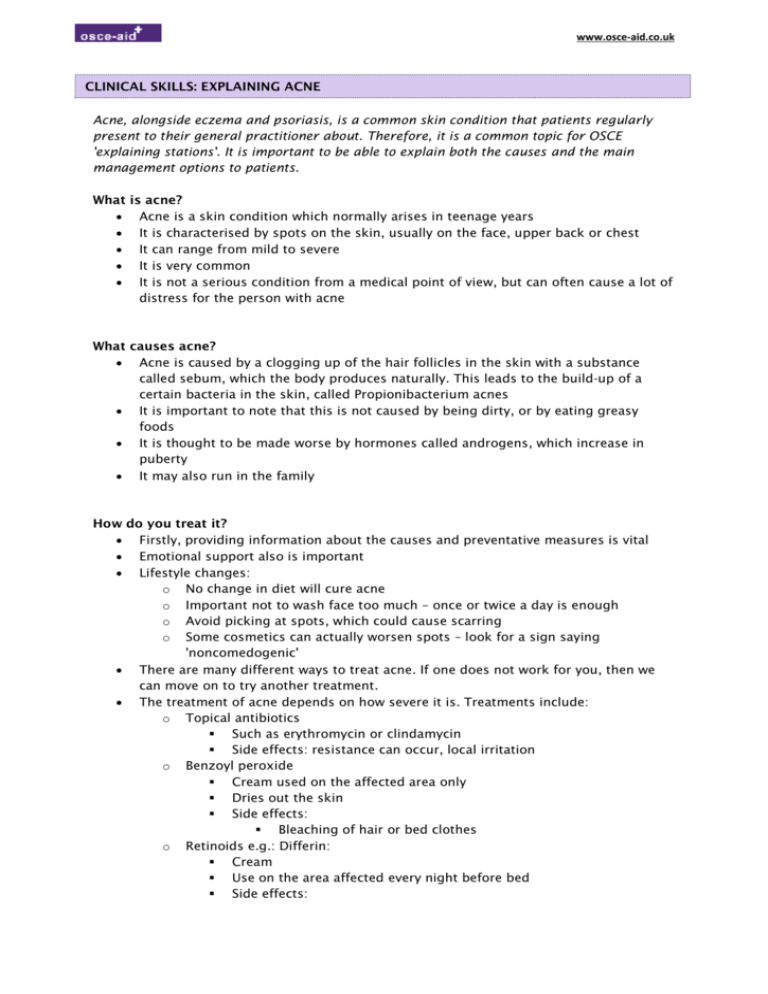
www.osce-aid.co.uk CLINICAL SKILLS: EXPLAINING ACNE Acne, alongside eczema and psoriasis, is a common skin condition that patients regularly present to their general practitioner about. Therefore, it is a common topic for OSCE 'explaining stations'. It is important to be able to explain both the causes and the main management options to patients. What is acne? Acne is a skin condition which normally arises in teenage years It is characterised by spots on the skin, usually on the face, upper back or chest It can range from mild to severe It is very common It is not a serious condition from a medical point of view, but can often cause a lot of distress for the person with acne What causes acne? Acne is caused by a clogging up of the hair follicles in the skin with a substance called sebum, which the body produces naturally. This leads to the build-up of a certain bacteria in the skin, called Propionibacterium acnes It is important to note that this is not caused by being dirty, or by eating greasy foods It is thought to be made worse by hormones called androgens, which increase in puberty It may also run in the family How do you treat it? Firstly, providing information about the causes and preventative measures is vital Emotional support also is important Lifestyle changes: o No change in diet will cure acne o Important not to wash face too much – once or twice a day is enough o Avoid picking at spots, which could cause scarring o Some cosmetics can actually worsen spots – look for a sign saying 'noncomedogenic' There are many different ways to treat acne. If one does not work for you, then we can move on to try another treatment. The treatment of acne depends on how severe it is. Treatments include: o Topical antibiotics Such as erythromycin or clindamycin Side effects: resistance can occur, local irritation o Benzoyl peroxide Cream used on the affected area only Dries out the skin Side effects: Bleaching of hair or bed clothes o Retinoids e.g.: Differin: Cream Use on the area affected every night before bed Side effects: www.osce-aid.co.uk 1. Local irritation to the skin – tends to settle over time 2. Photosensitivity 3. Teratogenic - if the patient is female then they must take contraception during treatment if there is any risk of her becoming pregnant Antibiotics, e.g: Dalacin T (topical clindamycin), Topicycline (topical tetracycline), and oral minocyline or tetracyclines o Should not be used <12 years of age or if pregnant as stain teeth and can affect bone formation o Much less resistance than other antibiotics used in the past. However, there is a risk of resistance so antibiotics are only used for a few months at a time. o Side effects: resistance and gastro-intestinal side effects. o Tetracyclines can cause: rash, dizziness, and >6 months can cause SLE and hepatotoxicity – usually only give for 3 months though The OCP, Diannette o Girls only o Not licensed for contraception purposes o Take for 21 days with a 7 day break o Contraindication if there is a positive family history or personal history of deep vein thrombosis, pulmonary embolism, breast cancer, significant hypertension, or focal migraine Side effects include: mood changes, weight gain & breast tenderness If these treatments are not effective, there are many others available to discuss It is important to note that this treatment will help to remove spots, but not the scars. Scars will need to heal alone over time, or if they are severe can be treated with laser treatment How long will I need to be on these treatments? Whatever treatment is used, it is normal to take up to four weeks for there to be any noticeable improvement in the skin. There is often a good response to treatment by six weeks. However, it can take up to four months (sometimes longer) for maximum response to a treatment, and for the skin to be generally free of spots. The most common reason for a treatment failure is because some people think that treatment is not working after a couple of weeks or so, and give up. So it is important not to stop taking the treatment until 4 weeks after it has been started. To conclude the consultation: Check if the patient has any questions or would like to clarify anything you've discussed Thank the patient and offer them a relevant leaflet Arrange a follow-up appointment to review progress and discuss the next steps in management
